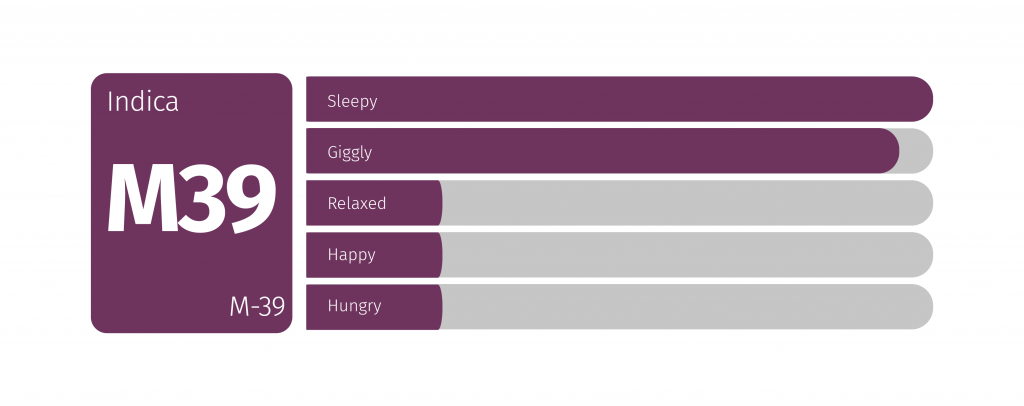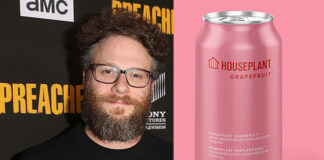Like most Americans of my generation, I first encountered Canadian cannabis in the early-1990s, courtesy of what came to be known as “Beasters.” Although many now look back on Beasters with snobbish disdain (the term itself has become something of a put down), at the time they were a big step up from the Mexican brick weed I’d grown used to smoking.
Canadian cannabis has not gotten the respect it deserves—simply because the underground growers up north kept their best herb to themselves.
Basically, Beasters was a perpetual supply of underground herb, grown on a mass scale somewhere up in Quebec (allegedly), and then illicitly exported to the United States. I didn’t know it back then, of course, but the new stuff was always the same strain, a heady cross of Northern Lights #5 and Skunk #1 properly known as M-39.
Find M-39 Nearby
When cultivated properly, M-39 produces dense, resin-coated buds with an enticing lemon taste. The only problem was that the syndicate behind the strain notoriously harvested way too early, and dried and cured their buds way too quickly—eager as they were to get started on another profitable indoor production cycle.
As a result, the finished product lacked taste, aroma and potency. And so, for far too long, Canadian cannabis has not gotten the respect it so richly deserves—simply because the growers up north kept their best herb to themselves, while flooding the US with “commercial”—another slang term of the era, used to describe quickly maturing, visually attractive, but ultimately sub-optimal cannabis grown primarily to make money.
My personal view of Canadian cannabis didn’t evolve until the summer of 2005, when I had a chance to visit for the first time, and make a rather privileged tasting tour of local strains with legendary cannabis cultivation guide Jorge Cervantes. We met dozens of growers while filming Jorge’s first-ever DVD, each with their own particular favorite “homegrown” varietal. And that was a decade ago, during which time many new incredible strains have been born.
So when better than now—as Canada moves into a beautiful new era of federally legal adult-use cannabis—to make a thorough accounting of the country’s most notable contributions to the pantheon of top-shelf cannabis?
Island Sweet Skunk
Find Island Sweet Skunk Nearby
I first smoked Island Sweet Skunk at an informal gathering of Canadian seed breeders that included more than a few legends of the game. Everyone arrived with a jar full of choice nugs from their latest harvest, eager to share and share alike. At the end of the night, however, after many the joint had been rolled and smoked, only one jar stood empty.
Well, nearly empty, as nobody wanted to be the one to take the last slice of pizza, so to speak. Not that we didn’t all think about it.
A buzzy, cerebral varietal, Island Sweet Skunk was originally bred by Federation Seeds out of British Columbia, who were seeking a true sativa strain that could be grown to full maturity in the unique microclimate of Vancouver Island. They found that and more in this cross of Sweet Pink Grapefruit and Big Skunk #1, which retains the former’s tart citrus flavor while adding funky, skunky undertones and even hints of cinnamon and cedar.
Island Sweet Skunk doesn’t yield very well, which explains why it’s mostly grown for head stash. Though that should be changing rapidly as Canada enters its fully legal era.
God Bud
Find God Bud Nearby
I may not be religious, but I do believe in God Bud, which I first tasted while serving as a judge at the 2004 Cannabis Cup in Amsterdam (where it took home highest honors in the “Indica” category).
A supernatural blend of Hawaiian, Purple Skunk, and “a mysterious Canadian strain known only as ‘God,’” this musky-sweet hybrid strain is a high-yielding cash crop that doesn’t fall short when it comes to flavor (tropical fruit, berries, lavender, pine) and potency. While not quite as “terpy” as today’s modern hybrids, God Bud grows well indoors or outdoors, and delivers a hefty dose of pain relief, sedation, and appetite stimulation.
Chemo
Find Chemo Nearby
According to legend, Chemo was developed back in the 1970s by a group of high-minded botanists at the University of British Columbia who’d taken it upon themselves to create a cannabis varietal specifically bred to alleviate the pain and nausea experienced by cancer patients going through chemotherapy. While that story may well be apocryphal, it is undoubtedly true that this strain’s sedative effects have brought relief and restored appetite to countless people suffering with severe illnesses.
Also known for its pleasant woodsy aroma and earthy flavor, the old-school varietal and its most sought after phenotypes have been stabilized and proliferated by legendary Canadian seed breeders Jordan of the Islands, Dr. Greenthumb, and Remo.
Jean Guy
Find Jean Guy Nearby
Ideally consumed while wearing a Canadian tuxedo (i.e., a jean jacket and jeans), the celebrated White Widow phenotype known as Jean Guy hails from Montreal, and is especially rich in a terpene called nerolidol that’s also found in ginger, jasmine, lavender, tea tree, and lemongrass. Nerolidol has proven antioxidant, antifungal, and antimicrobial properties that make it especially attractive to medical cannabis patients.
With a pungent sour citrus smell and a flavor profile that’s cut by notes of pine, the sativa-dominant, crystal-coated strain offers a soaring, cerebral high that’s great for those looking to get lifted. But this Jean Guy just might be too powerfully buzzy for someone seeking relief from anxiety or insomnia.
Love Potion #1
Find Love Potion Nearby
In 2005, when a Canadian seed breeder known as Reeferman traveled to Amsterdam and took home a Cannabis Cup for top sativa, it shook up the scene and sent shockwaves around the world. Until then, the old Dutch Masters, represented by veteran first-wave seed companies like Sensi, De Dampkring, and Greenhouse, had always wholly dominated a contest held in their own capital city. But then Love Potion #1 came to town—with bright pink buds that tasted of sweet lemonade—and overnight everything changed.
A cross of G-13 with a landrace sativa known as Santa Marta Colombian Gold, Love Potion’s electrifying high proved that combining the best modern hybrids with the raw power of old-school, purebred varietals from around the world offered a new path forward for cutting-edge cannabis breeders.
Romulan
Find Romulan Nearby
Although it’s named for a cunning race of extraterrestrials found in the Star Trek universe, the Romulan strain actually originated in Mendocino County—part of California’s famed Emerald Triangle—way back in the 1970s. So while the varietal is not originally from Canada, it didn’t really make a real name for itself until a mysterious breeder known as Emerald Joe emigrated up to British Columbia, taking his prized cutting with him.
Romulan flourished in Canadian soil, particularly after local breeders crossed it with White Rhino and developed a hearty phenotype that produces purple stems topped with dark green fan leaves and blue-hued buds. Prized for its powerfully sedative high, the pine-scented, resinous buds offer up a distinct peppery taste that’s now recognized and celebrated in every far-flung corner of the cannabis universe.



















